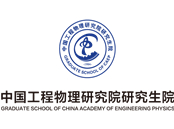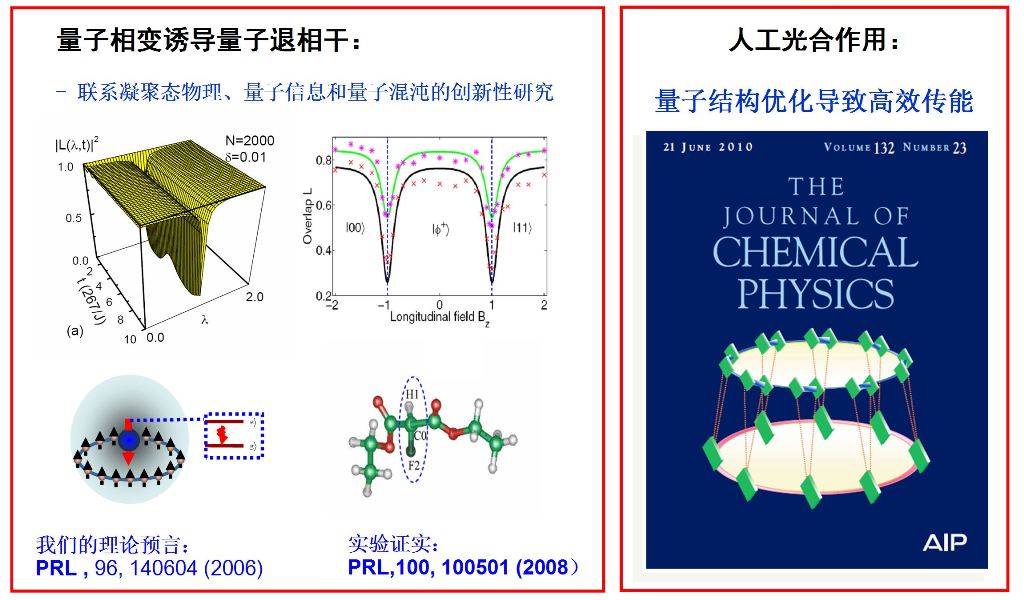Research

Brief Introduction
Dr. Chang-PU SUN (also spelled Sun Changpu) was born on July 17, 1962 in Xinjin County, Liaoning Province, China. He got his B.Sc. on July, 1984 in Northeast Normal University and then he worked there as a research assistant and a lecturer for two years. At his post, co-supervised by Profs. C.N. Yang (A Nobel Literature of physics, SUNY, USA, and Tsinghua Univ. China) and M.L. GE (Nankai), he achieved his Ph.D. on June 20, 1992 at Nankai Institute of Mathematics. Then, as a CEEC Fellow, he carried out his Post Dr. research in Institute for Theoretical Physics, the State University of New York at Stony Brook for one year. He became an Associate Professor and a full Professor separately in 1990 and 1992 in Northeast Normal University. In 1996, he moved to Institute of Theoretical Physics, Academia Sinica (the Chinese Academy of Sciences) and got a new permanent position as a full professor. In 2009, He was selected as an Academician of the Chinese Academy of Sciences. He is also a Committee Member of the Leadership Committee for Theoretical Physics in the National Natural Science Foundation of China, a Professor in association in Tsinghua University and Jilin University, and an Editor of the Chinese Journal of Quantum Optics and the Communication of Theoretical Physics, Science China, Advances in Mathematical Physics, was an Editorial Board member of J.Phys. A.

In the last 20 years, under the support of 13 projects (including the National Primer's Foundation for Excellent Youth) from National Nature Science Foundation of China, the Chinese Academy of Science, Dr Sun carried out investigations in theoretical and mathematical physics. His research mainly focuses on the fundamental problems of quantum mechanics and quantum field theory under extreme conditions (at very low temperature and in very small dimension), provided by modern high technology, such as the laser cooling in quantum optics and atomic physics. His works concern the quantum irreversible process, the collective behavior of the interacting quantum systems and the global process of quantum dynamics, such as wave function collapse in quantum measurement, quantum dissipation and fluctuation, Bose-Einstein condensation and Berry's topological phase factor. Necessary mathematical methods have been developed to obtain precise information about the structure and dynamics of quantum many body system. He has got interested in the quantum physics fundamental for quantum information, quantum computation and quantum teleportation. Currently, He is interested in fundamental aspects of quantum mechanics are partially oriented to the future quantum technologies, such as quantum information processing, quantum coherence devices and even the new generation of energy resource based on the artificial photosynthesis with quantum effects. He yearn for a "down-to-earth" understanding of them in association with the most recent experiments about circuit QED of superconducting system, Opto-mechanics with nano-mechanical resonators, the photon transport in low-dimensional confined structure, and the ultra-cold atoms in Bose-Einstein condensate.
Cooperating with many collaborators, Dr Sun has published over 230 papers. These papers range over various subjects including group representation theory in physics, the topological effects in quantum theory (Berry phase), particle physics, the Yang-Baxter equation for integrable nonlinear quantum systems, quantum dissipation, dynamic model of quantum measurement, cavity quantum electrodynamics, atomic Bose-Einstein condensation and quantum information based solid state systems, single photon transport in one-dimensional confined structure, artificial photosynthesis.
Awards for Recognitions
Due to his research and teaching work, Dr Sun has won many prizes. He won the prize of Young Scientists Top first Order (Chinese Academy of Science, 1999), was conferred the title of National Model Employee (The State Council of the People's Republic of China, 1995), and was awarded National Science and Technology Medal for Young Scientists (The Chinese Science and Technology Association 1992) and the Super- Level State Medal of Model Workers (The Jillian Province Government, 1994). He also got "Classical Citation Award" (ISI,USA, 2000) "the First Order Prize for Advance in Science and Technology "(The China National Education Committee, 1990,1996) for two times, "the Second Order Prize for Advance in Science and Technology" (The China National Education Committee, 1995) and the Third Order Prize for Advance in Science and Technology" (The China National Education Committee 1990). In 2008, together with his student Dr. H.T. Quan, his series of contributions to open quantum system theory was awarded by National Natural Science Prize (Class II). Three Ph. D students he supervised were awarded by "Outstanding Doctoral Dissertation in Chinese Academy of Sciences", 2 of which were given the 2007 "National One Hundred Outstanding Doctoral Thesis", 1 of which by "President Special Award in Chinese Academy of Sciences" and the "U.S. Los Alamos National Laboratory Director Fellowship".

Research description
In 1984, supervised by Prof. Z.Y. Wu, as a graduate student, Dr Sun began his study for master degree. In the subsequent several years, his interest was in the indecomposable representations of Lie algebras, Lie superalgebras, Kac-Moody algebras and quantum algebras. In a paper (J.Phys.A, 23(19989), L987) by C.P.Sun and H.C.Fu, he introduced the concept of q-deformed boson for the first time and pioneered the study of realization of quantum groups.
This work has been cited over two hundred times and has won "Classical Citation Award" by ISI, USA. In 1987, he proposed the high-order quantum adiabatic method in connection with Berry phase and induced gauge structure, and pointed out the direct observable effect of the induced gauge field for the first time. This method was applied to study the MSW mechanism in neutrino oscillation, the high spin-precession, the nuclear quadruple resonance and the classical analogs of Berry phase.
In 1989, Dr Sun became a Ph.D. candidate of Nankai Institute of Mathematics. During the study for Ph. Degree, together with Prof. M. L. Ge et al, he developed a general method of constructing the non-standard solutions of Yang-Baxter equation in terms of indecomposable representations of quantum groups at roots of unity. Moreover, co-operating with Dr X.F. Liu et al he suggested the concept of asymmetry quantum doubles (groups) and established the representation theory of q-deformed boson algebra.
From 1992 to 1993, he worked as a CEEC Fellow in Institute for Theoretical Physics, the State University of New York at Stony Brook, USA. In this period of time, along the line suggested by Prof. C. N. Yang, he probed the meaning of the wave function of a dissipative quantum system through exactly solvable models. Co-operating with Dr. L .H. Yu of Brook Haven National Lab., he essentially clarified the connection between two approaches for quantum dissipation, namely the effective Hamiltonian and the system plus bath approaches. Meanwhile he did some interesting work on the subject of quantum measurement. He generalized the dynamic model for the wave function collapse (WFC) mechanism in the classical limit and discovered a crucial role for the happening of WFC: factorized structure of the effective evolution operator. He also observed that a dynamic WFC is basically related to the phenomenon of quantum jump of coherence due to the unitarity of Schrodinger evolution.
Later, based on the above investigations he studied various effects of the atom mass center motion by the dynamics of atom-field interaction, such as the quantum non-demolition measurement of atomic momentum and photon number and the deflection of atom beam in a standing wave field. He carefully analyzed the spontaneous emission of atom from both the viewpoint of optical potential theory and that of Lippmann-Schwinger equation to scrutinize the validity of various approximations for quantum dissipation. He also discussed the linear and non-linear optical properties and the coherent output (atomic laser) of the Bose-Einstein condensed atoms in light field within the framework of quantum many body theory. For the dissipative wave in a classical cavity, he suggested the bi-orthogonal basis description for the quasi-normal mode theory presented by the K.Young group in CUHK.
Then, the above mentioned generalized dynamic model developed in the context of quantum measurement has been used to analyze the decoherence effect of quantum computation caused by the environment surrounding the quantum computer. It is well known that environment may decohere a qubit system immersed in it, making a quantum computation invalid. But the quantitative features of decoherence seem to depend on both the constitution of the environment and the details of its coupling with the qubit system. In our work we generally model the environment as a collection of a large number of subsystems and then consider to what extent and in which way the environment and its coupling with the qubit system may affect a quantum computation process. In the weak-coupling limit, we find that as far as decoherence time is concerned, there is no essential difference between an environment of two-level subsystems and an environment for harmonic oscillators. This implies that there exists some universality independent of specific constitutions of environments. However, it is also shown that this is not true at finite temperature or in the case of strong coupling. So only if the coupling is weak and the temperature low does there exist the possibility of developing a universal scheme of controlling a qubit system such that the decoherence is avoided. The possible effect of environment on the efficiency of a quantum algorithm is also explicitly illustrated through the example of Shor's prime factorization algorithm and Grover's quantum searching. We have also tried to present novel schemes for quantum communication such as the canonical teleportation and generalized quantum state preparation.
Recently, researches on quantum adiabatic approximation and induced gauge fields, begun 20 years ago, have redrawn attention since 2005 because of the development of the experiments on magnetically confined cold atoms. Related to this, Dr. Sun et al. proposed the crucial scheme of separating chiral molecules by utilizing the Stern-Garlach effect of induced gauge fields. This work had been reported and reviewed on the front page of the British "Physics World". His research on the dynamical sensitivity of quantum phase transitions has drawn international attention in 2006, because of its connections to various research fields in physics, such as quantum measurement, quantum chaos and condensed matter physics. Moreover, there were two experiments based on NMR firmly shown such dynamical sensitivity (Phys. Rev. Lett. 100, 100501 (2008); Phys. Rev. A 79, 012305 (2009)).